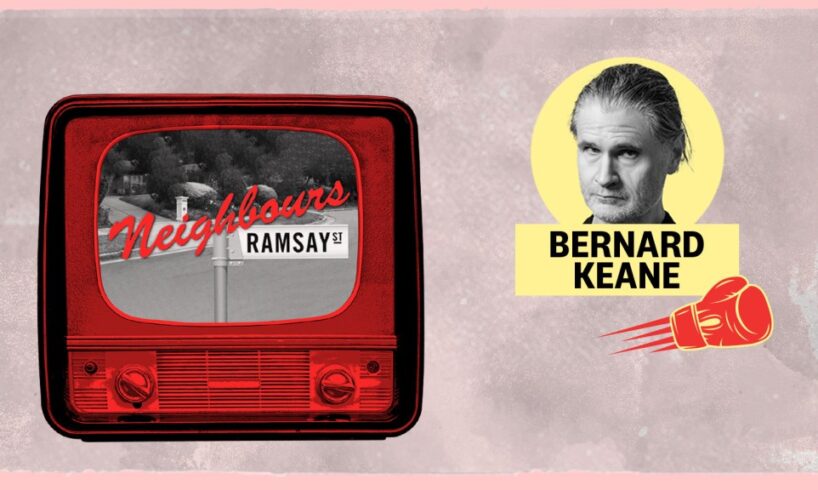
The Albanese government wants to force streaming services like Netflix and Disney+ to produce more Australian content to bolster local creative industries, which some fear are in crisis. So, should Australia impose local content quotas?
To debate that very question in today’s Friday Fight we have Crikey regular Ben Eltham arguing in the affirmative and our political editor Bernard Keane making the negative case.
While we’re not exactly as bad as Trump and co, it’s an ongoing feature of Australian protectionism that not merely have we reembraced propping up unviable industries, but we do it badly. The Albanese government, backed by the states, lavishing billions of taxpayer dollars on malignant corporations like Trafigura and any other mendicant multinational that can stick “sovereign” in a media release, is a case in point.
Labor’s latest wheeze, at least, doesn’t involve handouts, but is an example of wholly unnecessary protectionism: laws to compel larger streaming services to invest in local content (inevitably, there are local advocates of more protectionism for whom the proposal doesn’t go far enough).
It’s unnecessary because the production industry is in rude health: according to Australian Bureau of Statistics data, employment in the Motion Picture and Sound Recording industry, which covers TV and film production, averaged 40,000 in the year to August, the highest ever. That was up from around 36,700 in the year to August 2024 and 32,000 in the year to August 2023. Employment in the Creative and Performing Arts classification, which obviously stretches well beyond TV and movie production, averaged nearly 54,000 — the highest ever.
Related Article Block Placeholder
Article ID: 1228520
However, the justification for local content in film and television, unlike local content requirements elsewhere, has always been less about jobs than about the hoary cliché that Australians want to watch “our stories, told well”. Of course, Australians say they do, but they also say they like to buy Australian at the supermarket, when in fact they buy the best available product for their household needs and budgets.
It’s fiction we like to tell ourselves, and no politician ever lost votes exploiting it, but that doesn’t make it a sound basis for policy.
Local content requirements might have made sense in the analog era when we had a tightly controlled and gate-kept media market in which a cosy oligopoly could dictate pretty much the entire media consumption choices of Australians. One of the few requirements of those oligopolists was that they broadcast local content of varying kinds so that Australians weren’t simply served up an incessant array of cheap US-produced content.
Since pay-TV and then the internet arrived, that oligopoly has been in retreat, kicking and screaming and trying to stop Australians exercising choice in what content they consume and, critically, how and when they consume it. Governments, always eager to look after their media mates, have dutifully watered down local content requirements. Tony Burke’s latest imposition on streaming companies can be seen as yet another example — number 52,891 — of governments looking after the interests of the now dying TV oligopoly.
But the idea that governments should have some sort of role in determining what content Australian adults see is one that belongs back in the days when 30% of us spent a weeknight sitting round a radiator watching The Sullivans on a bulbous analog TV in the lounge room. Australians can now pick and choose what content they want to watch from all around the world just fine.
Oh the algorithm, local content enthusiasts will lament. Oh big US media companies and their evil ways, they’ll whine. Australians don’t really have proper choice, big streaming won’t allow it. We need the government to give them a choice.
Related Article Block Placeholder
Article ID: 1227516
Paternalists are always warning us about Big X (tobacco, alcohol, pharma, sugar, you name it) secretly manipulating us to do things they don’t like — such as, in this case, watch American content. But, sadly, Australians do plenty of objectionable things, like watch reality TV in their millions (yeah, I’m an old grump and I think reality TV is brain-rotting garbage that is partly responsible for the dire state of the world today. Sue me. Also, did you see the killer look the Mongolian woman gave the Turkish strongman during the pole-holding contest on Physical: Asia this week? No wonder he dropped it!)
But back to my original point. We always do protectionism badly. If governments are dumb enough to believe the paternalists and want to make sure Australians can, if they choose, watch “our stories, told well”, there are more effective ways of doing it than punishing new market entrants with rules about what they provide.
Instead, governments should, openly and transparently, fund the production of Australian content, and offer it for free or at very cheap rates, to any platform — national broadcaster, commercial broadcaster, subscription broadcaster, streaming services — or simply put it up on YouTube itself. Then taxpayers can see the cost of production, the auditor-general can investigate the efficiency of production, and parliament can pursue accountability.
Everyone’s happy, except those who don’t think it’s a good idea — but even we can point to the cost and if people don’t think it’s a problem, then fine. We go argue about something else.
Read the opposing argument by Ben Eltham.





